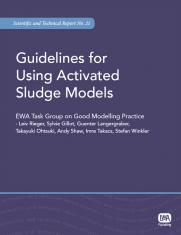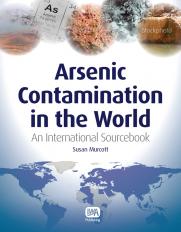The Wastewater life cycle inventory tool by 2.-0 LCA consultants
In October 2015 2.-0 LCA consultants released the "WW LCI tool", developed with three major industrial companies, to generate life cycle inventories (LCIs) associated with disposing of chemicals down the drain or directly into the aquatic environment. This article offers a short overview of the tool.
 Additional Resources for Guidelines for Using Activated Sludge Models (ISBN: 9781843391746)
Additional Resources for Guidelines for Using Activated Sludge Models (ISBN: 9781843391746)
This page provides additional material to complement Guidelines for Using Activated Sludge Models (part of the Scientific and Technical Report series) by the IWA Task Group on Good Modelling Practice. These resources are designed to assist Good Modelling Practice (GMP) in activated sludge modelling and include case studies, spreadsheets with error-checked Gujer Matrices and various modelling tools in spreadsheet format.
 Annex 1 for Arsenic Contamination in the World
Annex 1 for Arsenic Contamination in the World
Annex 1 is a summary database which provides supplementary material for content in Susan Murcott's book, Arsenic Contamination in the World: An International Sourcebook (2012).
Supplement to Impacts of Climate Change on Rainfall Extremes and Urban Drainage Systems
This electronic supplement was originally hosted on the WaterWiki page. It accompanies the IWA publication Impacts of Climate Change on Rainfall Extremes and Urban Drainage Systems.
Coagulation and Flocculation in Water and Wastewater Treatment
Coagulation and flocculation are an essential part of drinking water treatment as well as wastewater treatment. This article provides an overview of the processes and looks at the latest thinking.
A Brief History of Water and Health from Ancient Civilizations to Modern Times
Water is life – and life on earth is linked to water. Our existence is dependent on water, or the lack of it, in many ways, and one could say that our whole civilization is built on the use of water. This article examines the influence of water on public health throughout history. Farming and the development of settlements lead to the beginning of the problem that faces mankind today – how to get drinkable water for humans and cattle and how to manage the waste we produce. The availability of water in large quantities has been considered an essential part of civilization throughout the different periods: Roman baths needed a lot of water, as do the water closets and showers used in current Western civilization. The importance of good quality drinking water has been established for years. However, the importance of proper sanitation was not understood until the 19th century.
Flood Control and Disaster Management
Flood control refers to all methods used to reduce or prevent the detrimental effects of flood waters (wikipedia). Some of the common techniques used for flood control are installation of rock berms, rock rip-raps, sandbags, maintaining normal slopes with vegetation or application of soil cements on steeper slopes and construction or expansion of drainage channels. Other methods include levees, dikes, dams, retention or detention basins. After the Katrina Disaster that happened in 2005, some areas prefer not to have levees as flood controls. Communities preferred improvement of drainage structures with detention basins near the sites.
Reverse Osmosis and Removal of Minerals from Drinking Water
Reverse Osmosis will generally remove salt, manganese, iron, flouride, lead, and calcium (Binnie et. al., 2002). Most mineral constituents of water are physically larger than water molecules and they are trapped by the semi-permeable membrane and removed from drinking water when filtered through a RO (AllAboutWater.org, 2004). Meanwhile, consumers are concerned about the removal of minerals from their drinking water.
Disaster Management
Disaster management plans are multi-layered and are aimed to address such issues as floods, hurricanes, fires, bombings, and even mass failures of utilities or the rapid spread of disease. The disaster plan is likely to address such as important matters as relinquishing people from an impacted region, arranging temporary housing, food, and medical care.
Rainwater - Why is it Safe?
There are so many misconceptions in the world – and rainwater is no exception. When people think of rainwater, they often think of wastewater, pollutants and even balding! Do you think these ideas are accurate? Whilst such concerns might stem from a common misunderstanding, we seem to accept them as scientific fact. In this chapter, the truth will be exposed: rainwater is actually extremely clean and safe.